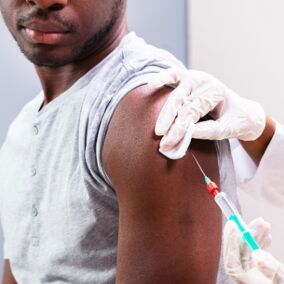
The CDC has issued its latest STI figures for the US and it’s not good news. The STI epidemic that the organization has warned about in previous years shows signs of escalating.
Gonorrhea, chlamydia and syphilis have all seen an increase in rates, beating previous figures. Key findings say gonorrhea rates increased by more than 4%.
Chlamydia rates also increased by nearly 4%, but have not yet returned to pre-pandemic levels.
Meanwhile, syphilis rates surged, increasing nearly 32%. Yikes!
The CDC notes, “2021 data show STIs continue to disproportionately affect gay and bisexual men and younger people. Additionally, a disproportionate number of cases were diagnosed among Black/African American and American Indian/Alaska Native people, groups more likely to face social conditions that make it more difficult to stay healthy.”
The organization says the country has to do more to make “STI testing and treatment more accessible, including through the development and approval of point-of-care rapid tests and self-tests.”
It also indicates it might be on the verge of officially recommending DoxyPEP.
What is DoxyPEP?
DoxyPEP is short for Doxycycline Post-Exposure Prophylaxis. It involves taking the antibiotic doxycycline after a sexual encounter to minimize the chances of acquiring an STI such as gonorrhea or syphilis.
A study last year found that when used within three days after unprotected sex, doxycycline reduces STIs by more than 60% in gay men. It’s already available in some clinics in San Francisco.
Related*


What is DoxyPEP and should more queer men use it to protect their health?
Have you heard about DoxyPEP?
The CDC has held off on officially recommending DoxyPEP. Some health officials have concerns about the development of antibiotic resistance. The CDC is awaiting the outcome of a few more trials in the coming months before stating a position.
However, a statement from Leandro Mena, Director of CDC’s Division of STD Prevention, hinted at “promising new STI interventions.”
“The U.S. STI epidemic shows no signs of slowing,” Mena said. “The reasons for the ongoing increases are multifaceted – and so are the solutions. For the first time in decades, we’re seeing promising new STI interventions on the horizon, but these alone will not solve this epidemic.
“It will take many of us working together to effectively use new and existing tools, to increase access to quality sexual healthcare services for more people, and to encourage ongoing innovation and prioritization of STI prevention and treatment in this country.”
Are you a sexually active gay man who has multiple partners? If so, get screened for STIs every 3-6 months, regardless of whether you symptoms or not. The more people who get tested regularly, the more infections in the community can be treated before they’re passed on to others.
Related*


One in five people in the U.S. estimated to have an STI
Another good reason to get tested regularly.











































Kangol2
This information needs to be shared across all social media platforms ASAP, especially now that vaccine-resistant monkeypox is out there AND given that Pride Month is just two months away!
Openminded
The negative side effect of PrEP. No ones afraid of (currently) treatable STDs so condom use while on PrEP is over for most. You don’t have to be a doctor to already know the effects of over use of antibiotics with DoxyPEP. Young people, PLEASE pay attention to what’s coming our way. You are not as bullet proof as your young mind thinks.